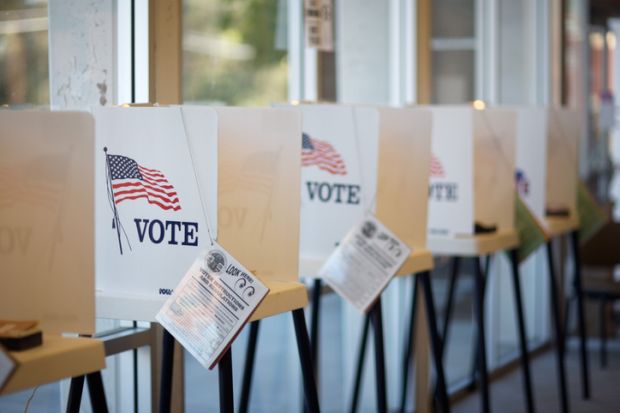In March 1965, civil rights activists marching peacefully from the Alabama city of Selma to the state capital Montgomery were attacked by police with clubs and teargas. Two years ago, President Biden commemorated the 56th anniversary of what became known as Bloody Sunday with a visionary executive order to promote access to voting.
The order called on federal agencies to use the tools they have to make voting more accessible for the millions of Americans who interact with them every day. Since then, we’ve seen a promising start: some agencies have taken significant action to meet prospective voters where they are, from the Department of the Interior offering voter registration services at tribal colleges and universities to the Department of the Treasury sharing voter registration details with Americans through the tax-filing process.
The Department of Education has one of the most powerful roles to play in boosting voting access and civic engagement by students and young people, who are often overlooked by traditional voter outreach from campaigns and other organisations. Yet the department is one of the agencies identified as being at risk of not meeting its obligations in a recently released report by a diverse coalition of advocates, including the Fair Elections Center.
Through our Campus Vote Project’s work on campuses around the country, we see how providing students with the information they need in an accessible way makes a significant difference when it comes to voter participation and civic engagement. Our work has also given us some insights into the kinds of things the department could do to help.
One idea is to add a voter registration opportunity to the application for federal student aid, the FAFSA. Young people often cite missing a deadline or lacking other important information as reasons for not registering to vote at similar rates as older voters. Meeting young people in places where they are already engaging with the government could help to redress this. More than 85 per cent of US students receive some form of financial aid for higher education, and, according to the most recent National Postsecondary Student Aid Study, the FAFSA is completed by 84 per cent of Black students, 74 per cent of Hispanics, 68 per cent of Asians and 75 per cent of Native Americans.
The Department of Education’s plan to include a link to Vote.gov on the federal student aid website is a positive step, but a more significant impact on youth voting could be made by further integrating voter registration into the student aid process. This could include adding the Vote.gov link to the electronic and paper copies of the Student Aid Report that students get after submitting their FAFSAs, as well as including a voter registration form with every mailed copy of the report.
The department should also ensure that higher-learning institutions know their legal obligations to provide voter registration opportunities and put best practices in their hands for improved campus civic engagement. In September 2021, the department committed to releasing a toolkit for higher-education institutions on effective ways to welcome the newest members of democracy into the process. By following through on this unfulfilled promise, it can provide immense support to more than 18 million young people enrolled in higher education. For example, providing recommendations for how campuses can serve as one-stop voter registration hubs, similar to state motor vehicle offices, could move the needle on young voters’ access to the ballot.
Third, the department should provide improved guidance to higher-learning institutions on the use of work-study funds for civic engagement work. Permission for that was granted in the spring of 2022, but as civic engagement among young people continues to rise, officials should provide clear, improved guidance on compensating work-study students who are doing civic engagement work with nonpartisan organisations that are not affiliated with their college or university.
Young people are the future of our democracy and, when they start voting early, they are more likely to develop a lifelong habit of democratic participation. With stronger voting rights protections currently stalled in Congress, the federal government must fully leverage the power it has to increase access to voting on its own. As the department that most directly touches their lives, the Department of Education has a responsibility to ensure that students have the information they need to participate in our elections.
Mike Burns is national director of the Fair Elections Center’s Campus Vote Project.
Register to continue
Why register?
- Registration is free and only takes a moment
- Once registered, you can read 3 articles a month
- Sign up for our newsletter
Subscribe
Or subscribe for unlimited access to:
- Unlimited access to news, views, insights & reviews
- Digital editions
- Digital access to THE’s university and college rankings analysis
Already registered or a current subscriber? Login








